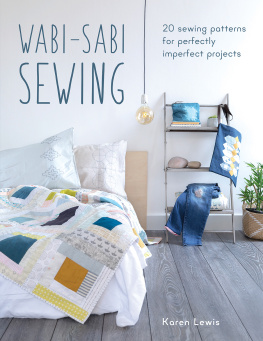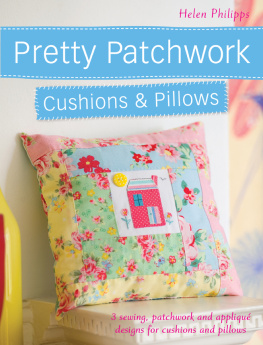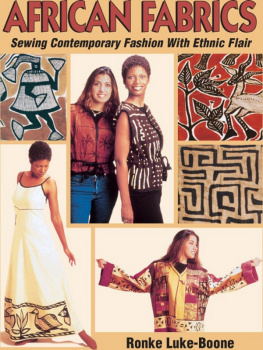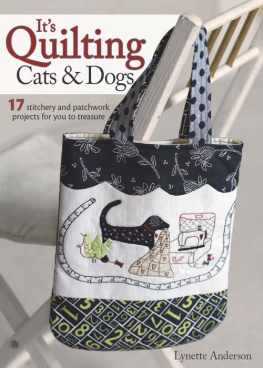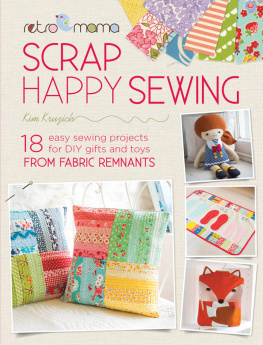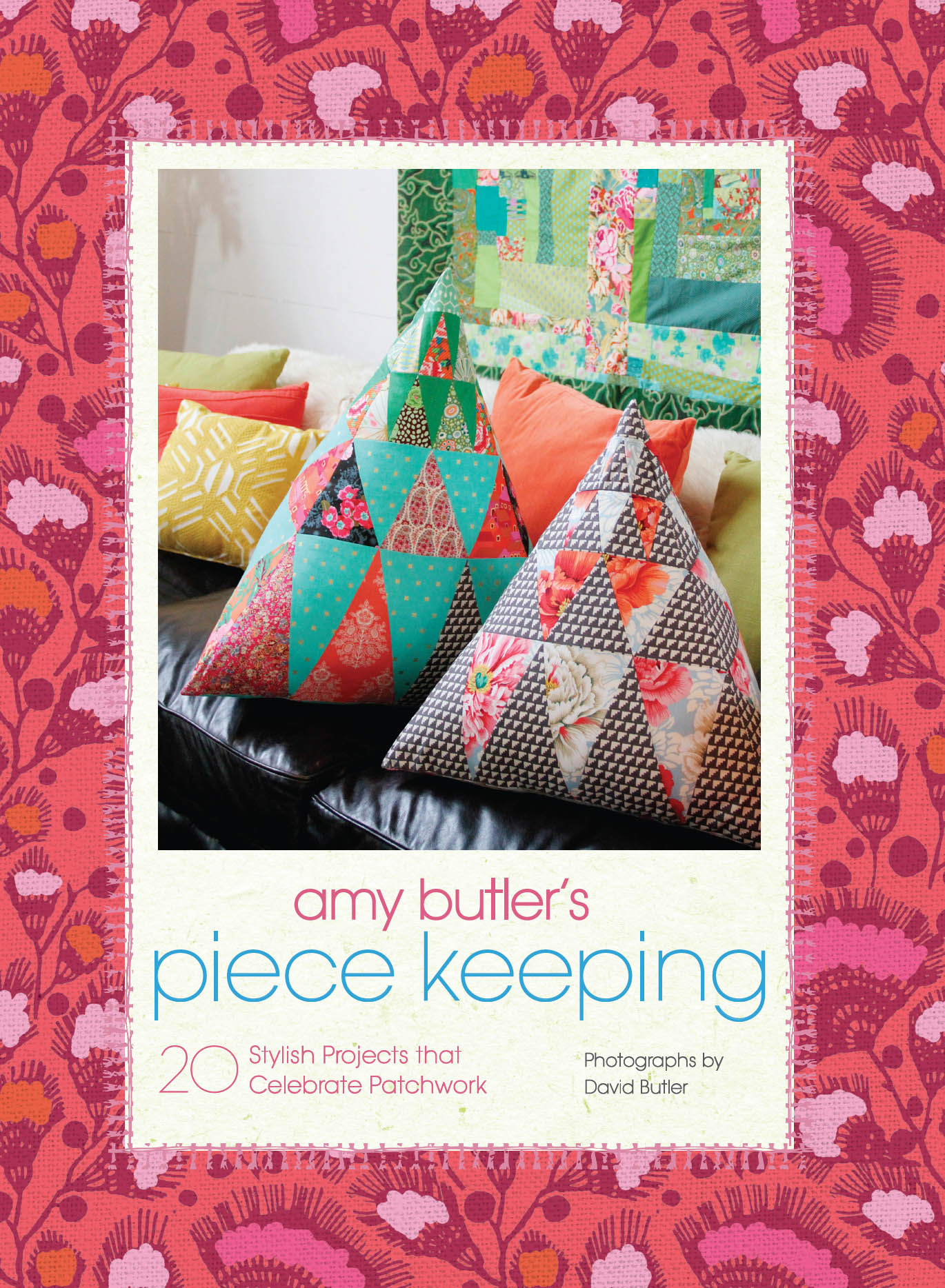



In honor of the
creative spirit in all of us!

Text copyright 2016 by Amy Butler Ltd.
Photographs copyright 2016 by David Butler
Illustrations copyright 2016 by Sheila Brex
All rights reserved. No part of this book may be reproduced in any form without written permission from the publisher.
ISBN 978-1-4521-3932-6 (epub, mobi)
Library of Congress Cataloging-in-Publication Data available.
ISBN 978-1-4521-3447-5 (hc)
Text and projects by Amy Butler
Instructions and illustrations by Sheila Brex
Photographs by David Butler
Photo Styling by Monique Keegans Enjoy Co.
Technical editing by Dolin OShea
Designed by Jeri Heiden for SMOG Design, Inc.
Aleenes Stop-Fraying fabric sealant is a registered trademark of Duncan Enterprises; Aleenes Jewel-It Washable Glue is a registered trademark of Duncan Enterprises; Biz detergent is a registered trademark of CR Brands, Inc.; Bosal fusible stabilizer is a registered trademark of Scambia Industrial Development; Carol Doak is a registered trademark of C&T Publishing; Clover Wonder Clips is a registered trademark of Clover Mfg. Co., Ltd.; Clubhouse Crafts Natural Cotton Braiding Cord is a registered trademark of Sulyn Industries; Coats threads is a registered trademark of Coats Group PLC; Fairfield Foamology Design Foam with Sticky Base is a registered trademark of Fairfield Processing Corporation; iCraft SuperTape is a registered trademark of Therm O Web, Inc.; Janome Memory Craft 6500 is a registered trademark of Janome Sewing Machine Co., Ltd.; Miyuki Beads is a registered trademark of Miyuki Co., Ltd.; Nature-Fil Blend by Fairfield is a registered trademark of Fairfield Processing Corporation; Nym shades are a registered trademark of IKEA; Pellon 806 Stitch-n-Tear is a registered trademark of Freudenberg Nonwovens; Prym-Dritz needles is a registered trademark of the Prym-Dritz Corp;RIT Bright White dye is a registered trademark of Phoenix Brands LLC; 505 Spray & Fix Temporary Fabric Adhesive is a registered trademark of ODIF USA; Wrights twill tape is a registered trademark of Simplicity Creative Group.
Chronicle Books LLC
680 Second Street
San Francisco, California 94107
www.chroniclebooks.com


CHAPTER
Design Influences
Themes, Inspiring Techniques & Handwork
I have a sweet spot for particular patchwork designs, shapes, and techniques, many inspired by traditional motifs like Flying Geese and Log Cabin. In this chapter I get to take you through the influences that make me crazy-in-love with patchwork and handwork, plus I get to dish a little bit about their history and meaning. These themes are the rich inspiration for the projects in this book.
Im inspired by these classics because theyre a wonderful starting point for all kinds of creative play, yet they have their own personalities and charm that can be translated a thousand different ways. I find Im attracted to repeating symbols, elements, and shapes; they appear often in my creative work: triangles, stripy lines, and energized zigzags! My favorite way to design is improvisational, letting my intuition be my guide and allowing a completely unique art piece to unfold in a spirited way. Theres great freedom in creating from this place; it feels like Im making a paintingone stroke of fabric at a time. I hope youll find your own special inspirations in this chapter to launch many creative adventures and endless hours of handmade pleasure.
Log Cabin
I really love the wonky and delicious surprises that happen when you design intuitively with the structure of Log Cabin blocks! These traditional blocks exude a playful, rhythmic energy that invites creative interpretation. Historically, Log Cabin quilts come from scrappy beginnings and were often made from recycled or discarded fabrics. The scraps of fabric were sewn to a foundation of muslin or other fabric in place of batting and hand-sewn together through the layers. The Log Cabin pattern is said to have gotten its name from its resemblance to the actual log cabins of the American pioneers just after the Civil War, when it became part of American history. However, the pattern itself has origins that go even farther back. An early nineteenth-century excavation of an Egyptian tomb found the pattern arranged in dyed linen strips around mummies and other objects of royalty. You can gather that the pattern must have been believed to have protective energy to carry the person into the next realm.
The significance of patterns throughout history and how theyre carried forward fascinates me! This could be why we have such a strong attraction to the Log Cabin design in blocks and quiltsits steeped in a mighty, rich history and has had a reason for being for a very long time. The discovery of these patterns in the early nineteenth century sparked a great deal of fascination in Europe and likely could have become the main influence in the Log Cabin working its way into households. It is believed the Amish brought the pattern over from Germany to America, where it then took on a whole new life.




Traditional Log Cabin blocks are made starting with a small piece of fabric as the center block. Strips of fabric are then sewn to this center piece counterclockwise in a sequential order. The strips can vary in shades from light to dark and vary in width. My heart votes for the variations on the traditional theme, leaning toward more freeform interpretations like the Improv Log Cabin, where the strips and squares, though built around a center piece, vary in size and direction as they are sewn. The pattern of the block is designed as it is stitched, with no planning, but comes together by using pure, unadulterated intuition, which I love!
Another variation of the pattern is the Wonky Log Cabin, where the strips and squares going around the center piece are not at right angles but have more of a slant or tilt to them. In both instances, I adore mixing large swaths of interesting fabrics into my Log Cabin quilts, with many of the prints coming from my vintage stash. I find these quilts are the perfect home for these cherished fabrics so I can enjoy them for many years to come. The dynamic and rich juxtaposition of the large fields of graphic prints combined with the rhythm of the Log Cabin design creates a wonderfully odd and totally unique quilt.




